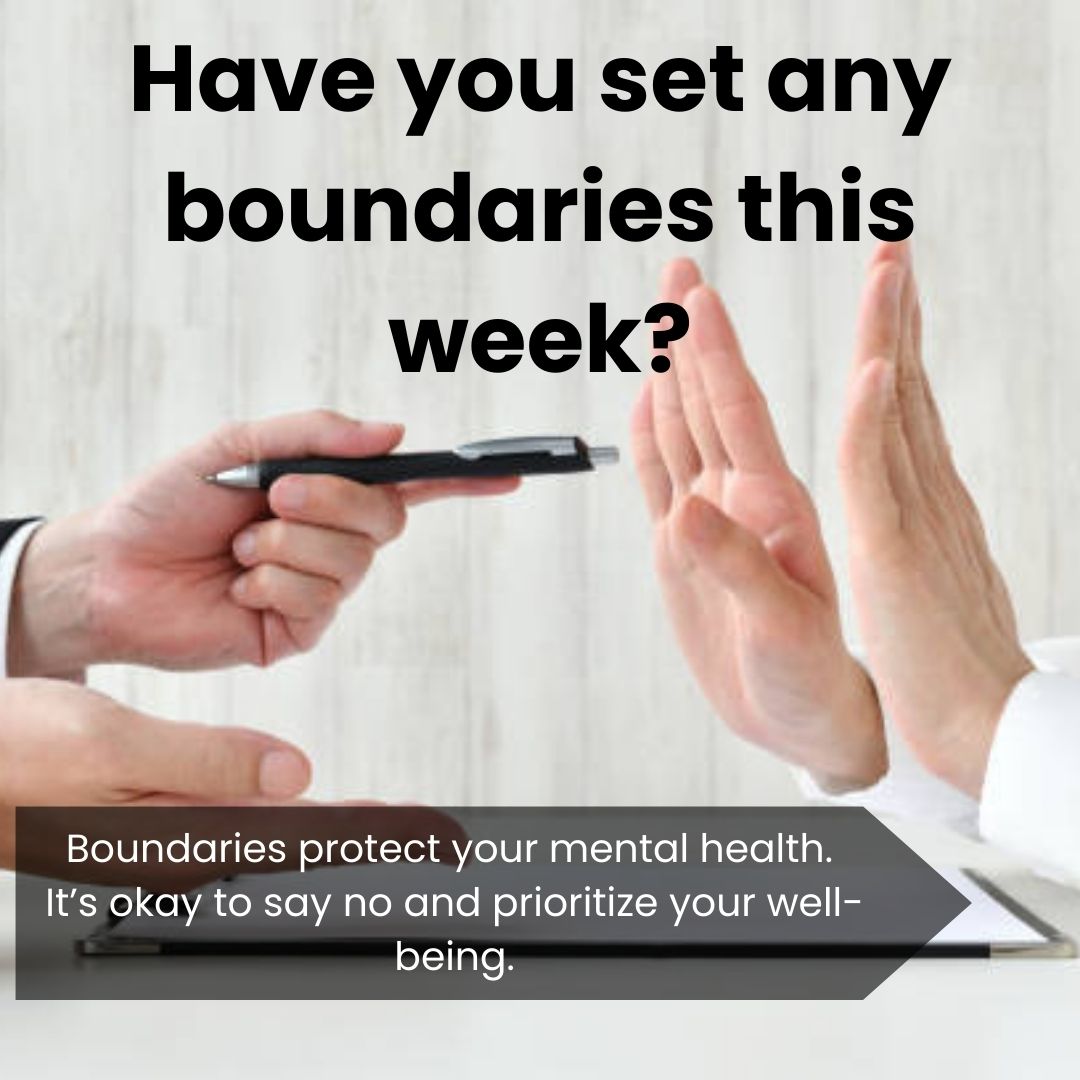
Setting Boundaries is Hard—But It Saved My Mental Health
Share
If there’s one thing I’ve learned on my mental health journey, it’s this: you can’t heal if you’re constantly pouring from an empty cup.
For years, I was doing exactly that—saying “yes” when I desperately wanted to say “no,” letting people overstep my limits because I didn’t want to make them uncomfortable, and putting everyone else’s needs above my own. It didn’t matter how drained I was, how anxious I felt, or how much I needed a break—I’d push through for them, never for me.
The result? I was exhausted. Burned out. Resentful. I was stuck in unhealthy patterns and toxic relationships, convincing myself I had to keep everyone happy to be worthy of love or acceptance.
The truth is, setting boundaries is hard. It feels unnatural at first. It can be awkward, uncomfortable, and even scary—especially if you’re used to being the “yes” person. But learning how to set boundaries was one of the most powerful and life-changing things I’ve ever done for my mental health.
And honestly? I wish I’d done it sooner.
Why Setting Boundaries Matters for Mental Health
Boundaries aren’t walls meant to keep people out—they’re the guidelines that teach others how to treat you. They define what’s okay and what’s not okay for you, without shame or apology. Without boundaries, you’re essentially handing the steering wheel of your life to everyone else.
When we don’t have healthy boundaries, we end up:
-
Constantly drained, overwhelmed, and overextended
-
Saying yes when we want to say no (and feeling guilty when we don’t)
-
Staying in relationships, jobs, or friendships that hurt us
-
Feeling anxious and on edge because we have no control over our time or energy
-
Resentful toward people we care about—not because of them, but because we didn’t protect ourselves
For me, the absence of boundaries meant living in a constant state of hypervigilance. I was always anticipating what people might want from me, what I needed to do to keep them from leaving, or what would keep them from being upset with me. It wasn’t living—it was surviving.
When I finally began setting boundaries, I realized something life-changing: when you protect your peace, you make space for the right people and the right energy to stay in your life.
How I Learned to Set Boundaries
I didn’t wake up one morning magically confident and ready to stand up for myself. I learned the hard way.
Years of ignoring my own needs led to mental breakdowns, self-harm, and suicide attempts. I reached a point where my mental health was so fragile, I had no choice but to make a change. I couldn’t keep giving away all my energy and expecting to have anything left for myself.
So, I started small. Really small.
-
I practiced saying “I can’t make it tonight” without a long, over-explained excuse.
-
I learned to respond with “That doesn’t work for me” instead of bending over backwards to accommodate everyone else.
-
I gave myself permission to walk away from conversations that felt disrespectful, toxic, or triggering—without guilt.
At first, it felt selfish. I worried people would think I was rude or difficult. But over time, I learned that boundaries weren’t about pushing people away—they were about protecting my mental health so I could show up better in the relationships that actually mattered.
5 Boundary-Setting Tips That Changed My Life
If you’re new to boundaries, here are the practices that helped me start—and stick with it:
-
Get clear on your limits
Spend time reflecting on what drains you, triggers you, or leaves you feeling resentful. These are signs of where you need boundaries. For example, maybe you can’t handle phone calls after 9 PM, or maybe certain topics are off-limits in conversations. Your needs are valid. -
Start small
If you’ve spent years being a people-pleaser, jumping straight into hard boundaries can feel overwhelming. Begin with something simple—like saying no to a small request—and build your confidence from there. -
Communicate clearly
Boundaries work best when they’re direct and simple. You don’t need to justify or over-explain. Phrases like “I’m not able to do that” or “That doesn’t work for me” are short, clear, and effective. -
Expect pushback
The people who benefited from you having no boundaries may not love the new you—and that’s okay. Stand firm. If they walk away because you won’t be taken advantage of, they were never meant to stay. -
Stick to it
A boundary only works if you honor it. If you give in every time someone pushes, it sends the message that the boundary doesn’t matter. Respect your own limits as much as you expect others to.
The Personal Wins
Since setting boundaries, my mental health has improved in ways I didn’t think were possible. My anxiety has decreased, my relationships feel healthier, and I no longer feel the crushing weight of trying to be everything for everyone.
I have more energy for the people and things that truly matter to me. I no longer feel guilty for putting myself first. And I’ve learned one of the most important lessons of my life: protecting my energy isn’t selfish—it’s necessary.
You’re Allowed to Protect Your Peace
If setting boundaries feels uncomfortable at first, know that you’re not alone. Most of us have been taught to put others first, even at the expense of our own mental health. But here’s the truth—you’re allowed to take up space. You’re allowed to say no. You’re allowed to protect your peace.
Start small. Give yourself permission to choose you. The people who truly care will respect your boundaries—and the rest? They’ll fade away, leaving more room for the right connections.
And if no one has told you this today—you are worth protecting.
XO
Tyler
